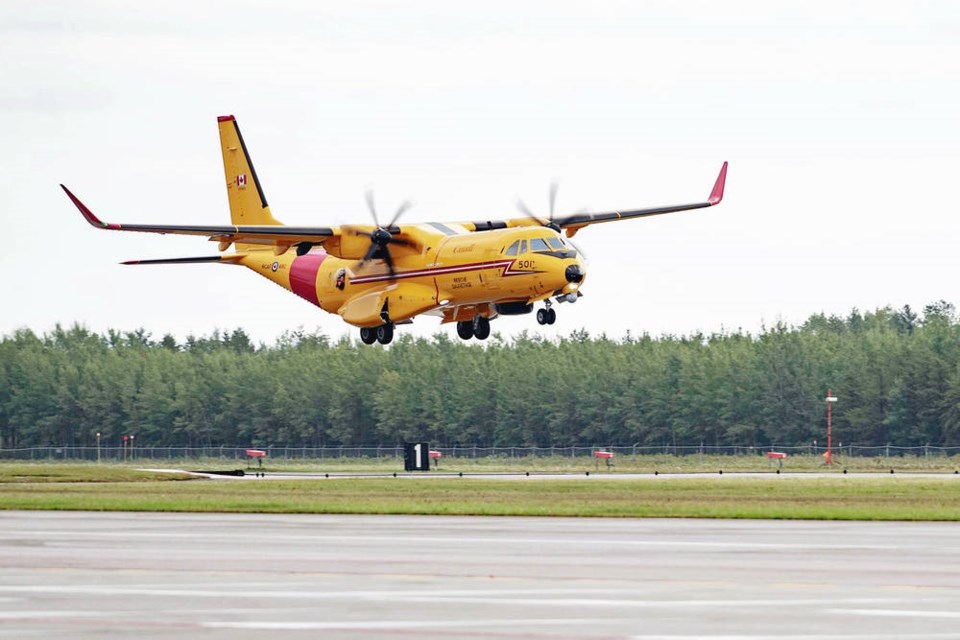The federal government unveiled its first new search and rescue fixed-wing aircraft in nearly a half a century at CFB Comox on Friday.
But the CC-295, made by Airbus in Spain and dubbed the Kingfisher, won’t be in the skies for several months, as the Royal Canadian Air Force completes tests on the new aircraft and trains search-and-rescue crews.
The current fleet of six DHC-5 Buffalo aircraft and seven CC-130H Hercules planes — all of which are about 50 years old — will continue to fly even though the two fleets were supposed to be retired five and three years ago, respectively.
The Kingfisher at Comox is the first of 16 new aircraft expected to arrive in Canada following more than 15 years of controversy and start-stop efforts to buy replacements for the Buffalo and older-model Hercules aircraft used by the military to rescue Canadians every year.
The government receives about 10,000 distress calls a year, and while most are handled by the provinces or territories, with police and volunteers tasked to respond, the military answers about 750 of the highest-risk calls.
Military search-and-rescue personnel often use specialized airplanes and helicopters to parachute or rappel into remote areas, such as mountains, the High Arctic or one of Canada’s three oceans to respond to plane crashes and sinking ships.
Troy Crosbie, who oversees military procurement at the Department of National Defence, said the Kingfisher fleet won’t start to fly full missions until mid-2022.
The government said Friday that while the CC-295 Kingfisher is being operationalized at 19 Wing Comox, fixed-wing search and rescue services will continue using the Buffalo and Hercules fleets, along with the CH-149 Cormorant and CH-146 Griffon helicopters.
Specifically designed to perform search and rescue missions across Canada, the new aircraft is equipped with integrated sensors that will allow crews to locate people or objects from more than 40 kilometres away, even in low-light conditions. Its communications systems have increased connections with other search and rescue aircraft.
The eventual fleet of 16 Kingfishers, worth about $2.4 billion, will be based at four locations across Canada: Comox, Trenton, Ont., Greenwood, N.S., and Winnipeg. The aircraft will arrive in stages as crews are trained.
“It is essential that our search and rescue crews have the modern and effective aircraft they need to carry out this critical work,” said federal Defence Minister Harjit Sajjan. “I am thrilled at the arrival of this first CC-295 Kingfisher in Comox, as it represents another successful milestone for this project, while also supporting our mission of being strong at home.”
Part of the project includes the construction of a new training centre.
The centre in Comox, built by Canadian training and simulation company CAE Inc., includes 10 classrooms, as well as training devices such as a full-flight simulator, a cockpit procedures trainer, a sensor station simulator and an aircraft maintenance trainer. The centre will be used to train maintenance personnel and aircrews.
Despite the delays, Crosbie said the project — which includes an option to pay Airbus $2.4 billion more to have the company maintain the plane for another 15 years — remains on budget and the hope is for two more Kingfishers to make the journey to Canada by the end of the year.
“It’s a big milestone with the first operational aircraft coming across from Spain,” he said. “And the airplanes are going to be ready for us at a pretty steady rate.”
— With files from the Canadian Press



